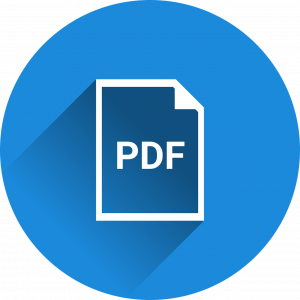Research Grants – instructions for the New PDF Forms
Posted on: May 8, 2020
The Office of Research Services is streamlining the application process for internal research grants.
We are phasing out the use of Microsoft Word-based forms, in favour of PDF forms. The use of PDF forms simplifies the review process for the adjudication of applications, reducing the burden on the Research and Faculty Development Committee.
Advantages of PDF formsPDF forms provide superior consistency than those Microsoft Word-based. They assist applicants in filling out sections through the use of drop-down menus, and self-calculating budget sections. Some values (e.g., the total budget amount) are automatically transferred to other sections as needed (e.g., the cover page). The fields in the application have also been designed so that they assist applicants to comply with the guidelines (e.g., character count limits, maximum budget request amount) and CUE policies and procedures (e.g., minimum salary rate for Research Assistants, maximum number of days for research travel). For ease of use, copy/paste of text into the form is allowed; however, images and drawings cannot be inserted. |
|
Special Considerations for PDF forms
During the pilot launch we identified misuse of our PDF forms. Forms were edited for content using PDF editors, or converted into Microsoft Word documents, both of which are against the spirit in which they were created. To prevent this, all of our forms are now password-protected. Forms cannot be edited or altered, and this is by design. Information can only be entered in the fields where it is allowed. Some sections are, therefore, unavailable for user edits.
Common solutions to issues.
- Our PDF forms were extensively tested using Adobe Acrobat Reader, but they should work as well with PDF reader software other than Adobe.
- To edit, download the forms and open them using Adobe Acrobat Reader.
- Do not edit the forms using your browser, Microsoft Word or other software.
- Make sure to hit the “Enter” key once you have typed information in a box, to guarantee that it is properly processed by the form.
- Forms can be saved at any time on your computer and the information is preserved so you can resume editing at any time. Make sure to save them before closing the PDF reader.
- There is a minor glitch on some fields of the SCRP COVID-19 form (“Alignment with the requirements and the Areas of Research for the Special Call”, “Research Plan and Timeline”, and “Preparation of the Impact Report”). The SCRP COVID-19 form was based on the CUE-NSE form, and it contains some hints that were specific to the latter and which appear when you place the mouse arrow over the field box and leave it there for a second or so. Please, ignore these pop-up yellow boxes for these fields as they are incorrect for this call, and follow the directions written on the form itself, or in the guidelines.
FAQ’s
Preparing an application submission document (single PDF file)
While password protection helps us maintain the design and functionality of the forms, they create a minor problem: file merging is restricted for PDF forms that are password protected. The guidelines for the submission of applications indicate that documents must be submitted as single PDF files with the application attached to the rest of the documents in the checklist in the correct order. To resolve this issue, temporarily and due to the COVID-19 emergency, applicants will have two options.
Option 1. This is the preferred option by the ORS.
- The applicant prepares the application form, prints, signs and scans the signature page and emails it to the Chair/Head of the Department.
- The Chair/Head prints the page, signs, scans and returns it to the applicant.
- The applicant prints the application in full, replaces the signature page, organizes the application so that all documents follow the order of the checklists.
- The applicant scans the application in full as a single PDF document and emails it to the ORS.
Option 2. Not the preferred option by the ORS.
- The applicant prepares the application form, prints, signs and scans the signature page and emails the application to the Chair/Head of the Department.
- The Chair/Head signs “electronically” by sending an email to the applicant where they state that: they have read the research proposal and agree that the obligations can be fulfilled; confirm that the applicant and/or co-applicant(s) have the necessary time and facilities to carry out the research; and agree that resources identified in the proposal will be available to complete the project.
- The applicant scans the application in full, organized so that all documents follow the order of the checklists.
- The applicant emails a single PDF document to the ORS.
In exceptional cases, the ORS may accept the application form and the attachments to be sent separately (one PDF file for the application form and a single PDF file for all the attachments, in the order of the checklist). The ORS will merge the files as a courtesy for applicants.
For any additional questions, please contact the Office of Research Services (research@concordia.ab.ca)
